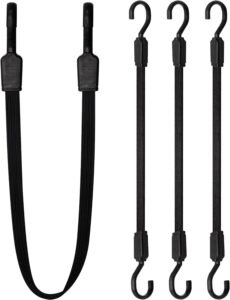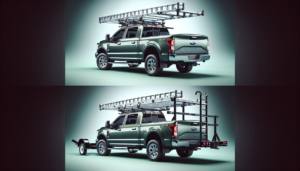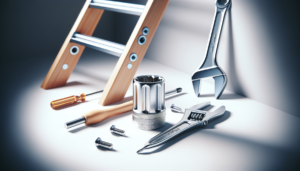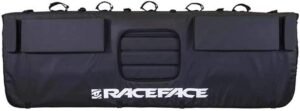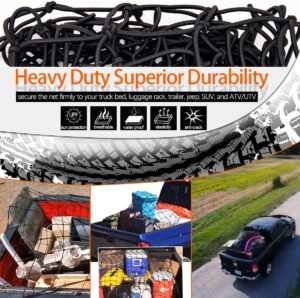
Imagine you’re heading out for a day of work, with a loaded ladder rack securely fastened to your vehicle. Before hitting the road, it’s essential to ensure the safety of yourself and others. In this article, we’ll explore the key precautions you need to take when driving with a loaded ladder rack. From securing the rack properly to maintaining a safe speed, we’ll provide you with valuable tips to ensure a smooth and secure journey. So, let’s buckle up and embark on the road to safer travels with your loaded ladder rack!
Choosing a Suitable Ladder Rack
When it comes to choosing a suitable ladder rack for your vehicle, there are a few important factors to consider. First and foremost, you need to consider the weight capacity of the rack. It is crucial to ensure that the rack you choose can safely support the weight of your ladder and any other equipment you plan to transport. Overloading the rack can lead to instability and potential accidents on the road.
Another important consideration is ensuring proper fit and compatibility with your vehicle. Not all ladder racks are universal, so it is essential to check the compatibility of the rack with your specific vehicle make and model. This will ensure a secure fit and prevent any unwanted movement or shifting during transportation. Additionally, make sure to follow the manufacturer’s instructions for installation to ensure optimal safety.
Lastly, it is recommended to select a ladder rack that is constructed from sturdy and durable materials. Look for racks made from high-quality materials such as aluminum or steel, as they offer excellent strength and durability. A well-built ladder rack will provide added stability and reduce the risk of accidents or damages during transportation.
Properly Securing the Ladder Rack
Once you have chosen a suitable ladder rack for your vehicle, it is crucial to properly secure it to ensure the safety of yourself and others on the road. Here are some tips to help you properly secure your ladder rack:
-
Use high-quality and properly rated tie-down straps to secure your ladder to the rack. Ensure that the straps are in good condition and free from any wear or damage. It is recommended to use ratchet straps or cam straps, as they provide excellent tension and hold.
-
Securely fasten the ladder rack to your vehicle according to the manufacturer’s instructions. Use the provided hardware and bolts to ensure a tight and secure connection. Avoid using makeshift or improper fasteners, as they may not provide sufficient strength and stability.
-
Double-check all connections and fasteners before hitting the road. Give each bolt and hardware a final inspection to ensure they are properly tightened. Loose connections can lead to a wobbly rack, which can compromise the safety of your load.
-
Always follow the recommended weight capacity for your ladder rack. Overloading the rack can cause it to become unstable, increasing the risk of accidents or damages. Be mindful of the weight of your equipment and distribute it evenly across the rack for optimal balance.
Inspecting the Ladder Rack and Load
Regular inspections of your ladder rack and load are essential to ensure their safety and prevent any potential hazards on the road. Here are some inspection tips to follow:
-
Regularly check for any signs of wear or damage on your ladder rack. Inspect the structural integrity of the rack, including welds, joints, and mounting points. Look for any cracks, dents, or rust that may compromise the rack’s strength. If you notice any issues, repair or replace the rack as necessary.
-
Ensure all bolts and hardware are tightened securely. Over time, vibrations and movement can cause connections to loosen. Periodically inspect and tighten all fasteners to maintain the stability of the rack.
-
Inspect the load for stability and balance before driving. Make sure the ladder is properly secured to the rack and does not wobble or shift. Ensure that the weight is evenly distributed to prevent any imbalance that may affect the vehicle’s handling.
Maintaining Proper Vehicle Balance
Maintaining the proper balance of your vehicle is crucial when driving with a loaded ladder rack. Here are some tips to help you achieve and maintain optimal balance:
-
Distribute the weight evenly on the ladder rack. Avoid placing excessive weight on one side, as it can throw off the balance of the vehicle and increase the risk of instability. Consider using additional support, such as support bars, to evenly distribute the weight if needed.
-
Ensure the vehicle’s weight distribution remains balanced. As you load your ladder rack, be mindful of the weight distribution throughout the vehicle. Avoid overloading the rear or front end, as it can affect the steering and braking capabilities of the vehicle.
Adjusting Driving Behavior
Driving with a loaded ladder rack requires some adjustments to your driving behavior to ensure the safety of yourself and others on the road. Here are some tips to follow:
-
Drive at appropriate speeds and avoid sudden maneuvers. The added weight on the ladder rack can affect the vehicle’s handling and braking. Drive at a moderate speed and leave ample distance between your vehicle and the one in front of you to allow for safe stopping.
-
Allow for increased stopping distances and slower acceleration. The additional weight on the vehicle can increase the braking distance required to come to a complete stop. Adjust your driving accordingly and avoid sudden acceleration that may cause the load to shift or fall.
-
Be cautious of height restrictions and low-clearance areas. The height of your loaded ladder rack may exceed the height restrictions in certain areas. Pay attention to signage and be mindful when passing through tunnels, parking garages, and other areas with low clearance.
-
Maintain a safe distance from other vehicles. The added weight and dimensions of your loaded ladder rack can affect the aerodynamics and maneuverability of your vehicle. Give yourself extra space and avoid tailgating to minimize the risk of accidents.
Protecting Surrounding Objects
When driving with a loaded ladder rack, it is important to take precautions to protect surrounding objects and ensure clear visibility on the road. Here are some tips to help you protect yourself and others:
-
Ensure the ladder rack does not obstruct rearview mirrors or windows. Adjust the position of the ladder rack to ensure it does not block your view or impede your ability to see other vehicles or pedestrians. Clear visibility is essential for safe driving.
-
Be mindful of clearance when parking or passing through tight spaces. The added height and dimensions of the ladder rack may require you to be extra cautious when maneuvering in tight spaces, such as parking garages or narrow streets. Take your time and exercise caution to avoid any collisions or damages.
-
Use flags or warning signs to increase the visibility of extended loads. If your ladder extends beyond the length of your vehicle, it is recommended to attach flags or warning signs to increase visibility for other drivers. This can help prevent accidents by alerting others to the presence of your extended load.
Checking Local Regulations
Before driving with a loaded ladder rack, it is crucial to familiarize yourself with the local laws and regulations regarding ladder racks and loads. Different areas may have specific requirements or restrictions that you need to comply with. Some jurisdictions may require additional safety measures, such as reflective tape or specific load securing methods. Always abide by the local regulations to ensure safe and legal transportation.
Safe Loading and Unloading Procedures
Following safe loading and unloading procedures is essential to prevent injuries and damages. Here are some guidelines to help you load and unload your ladder safely:
-
Use proper lifting techniques to avoid strain or injury. Lift with your legs, not your back, and ask for assistance if the ladder is too heavy or bulky to handle alone. Take your time and avoid rushing to prevent accidents.
-
Have a helper assist in maneuvering the ladder on and off the rack. Another set of hands can make the process safer and more manageable. Coordinate your movements and communicate clearly to ensure everyone’s safety during the loading and unloading process.
-
Ensure the ladder is securely fastened before driving. Double-check all fasteners and connections to ensure that the ladder is properly secured to the rack. Give it a gentle shake to test its stability before getting on the road. If any issues are detected, address them immediately before proceeding.
Handling Strong Winds and Bad Weather Conditions
Driving with a loaded ladder rack during strong winds or bad weather conditions requires extra caution. Here are some tips to help you navigate these conditions safely:
-
Exercise extra caution during strong wind gusts. The added height and dimensions of the ladder rack can make your vehicle more susceptible to wind forces. Reduce your speed and maintain a firm grip on the steering wheel to counteract any strong gusts that may affect the stability of your vehicle.
-
Reduce your speed and maintain a safe following distance. Bad weather conditions such as rain, snow, or ice can affect the road’s grip and your vehicle’s handling. Slow down to a safe speed and increase your following distance to allow for ample stopping distance.
-
Pull over and secure the load during severe weather if necessary. If the weather conditions become extreme, such as during a severe storm or high winds, consider finding a safe location to pull over and temporarily secure your load. Your safety and the safety of others on the road should be the top priority.
Regular Maintenance and Inspections
Regular maintenance and inspections of your ladder rack and vehicle are crucial to ensure their continued safety and performance. Here are some maintenance tips to follow:
-
Clean and lubricate the moving parts of the ladder rack regularly. Dust, dirt, and debris can accumulate on the rack’s joints and moving components, affecting their performance and longevity. Regular cleaning and lubrication can prevent corrosion, ensure smooth operation, and prolong the rack’s lifespan.
-
Check tie-down straps for signs of wear or damage. Over time, tie-down straps can become worn or weakened, compromising their strength and reliability. Regularly inspect the straps for fraying, cuts, or any other signs of damage. Replace them as needed to maintain optimal load securing capabilities.
-
Inspect the vehicle’s suspension and tires for any issues. The added weight of the ladder rack and load can put additional strain on your vehicle’s suspension and tires. Periodically inspect these components for any signs of wear, damage, or abnormal wear patterns. Address any issues promptly to ensure safe driving conditions.
By following these safety precautions and guidelines, you can confidently drive with a loaded ladder rack while ensuring the safety of yourself, your load, and other road users. Prioritize regular inspections, proper securing techniques, and adjusting your driving behavior to ensure a smooth and safe journey. Stay informed about local regulations and maintain regular maintenance procedures to keep your ladder rack and vehicle in top-notch condition. Safe travels!

